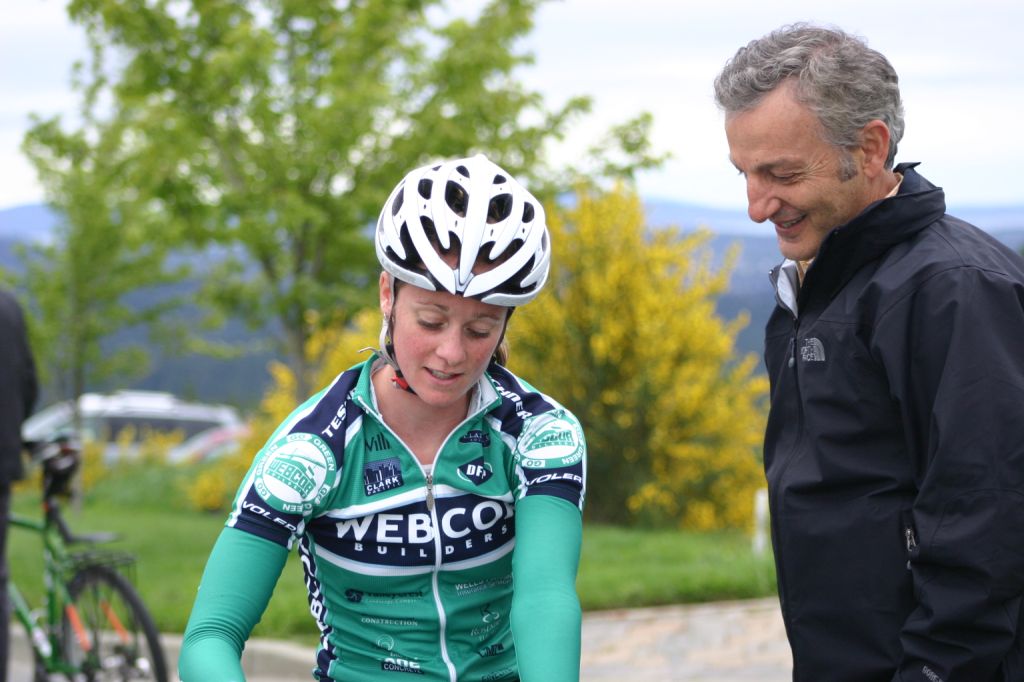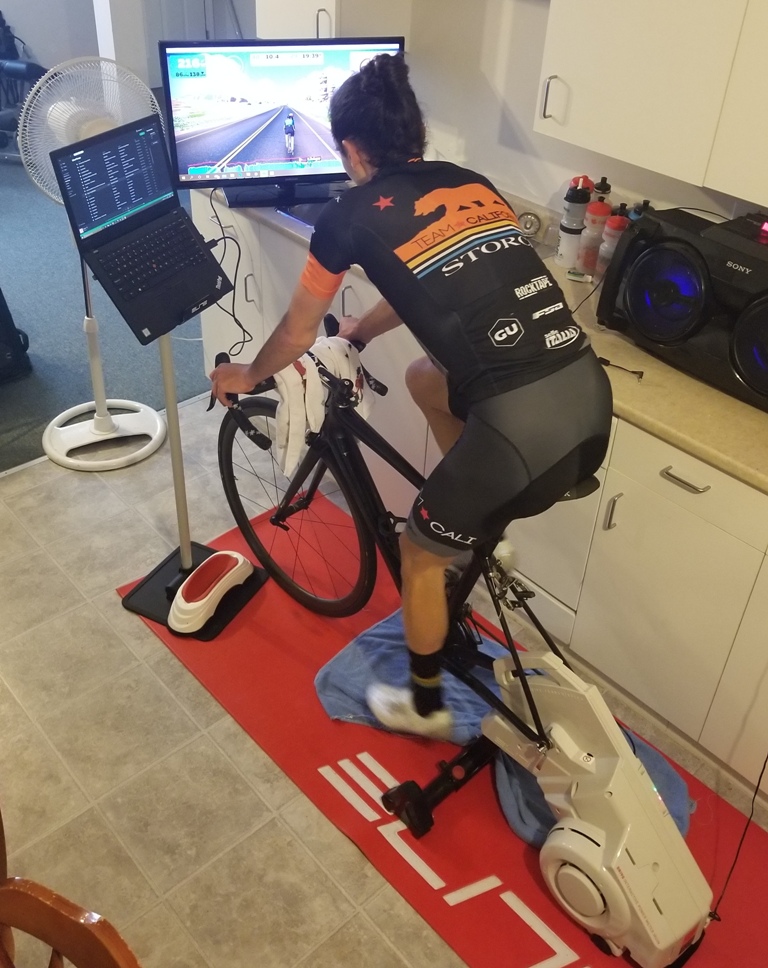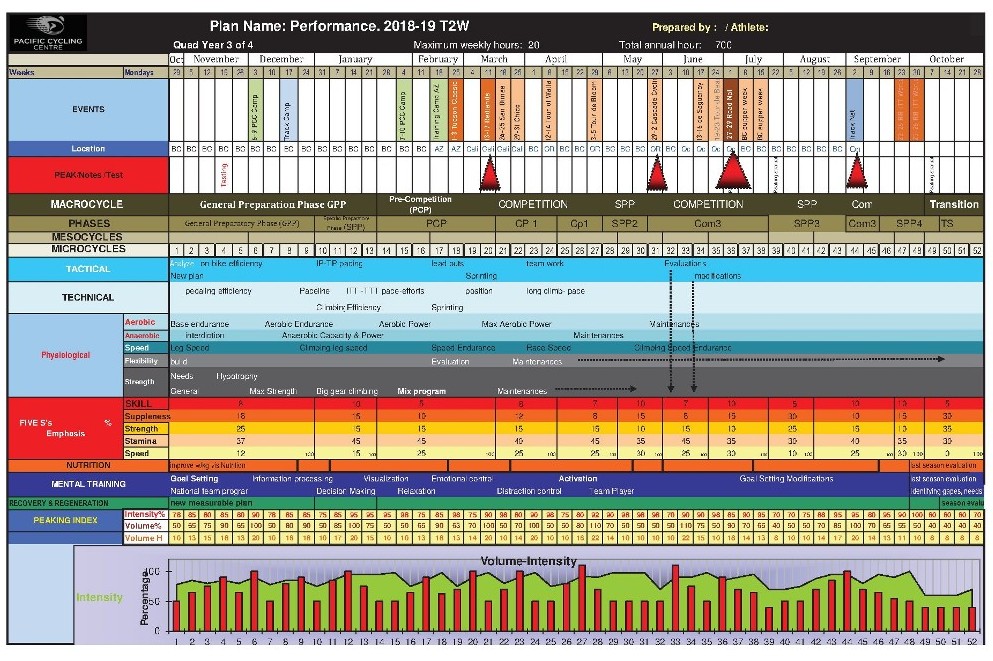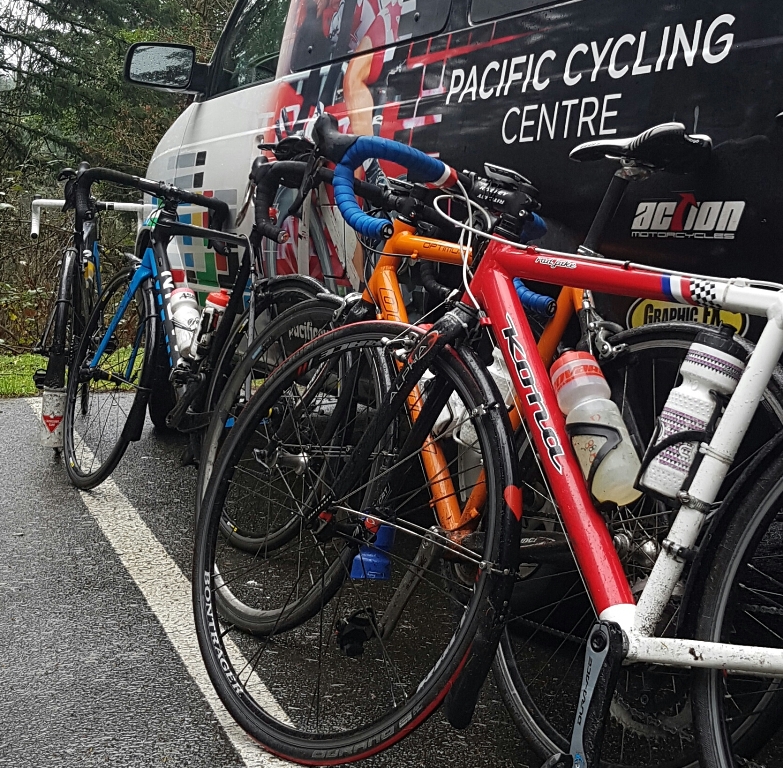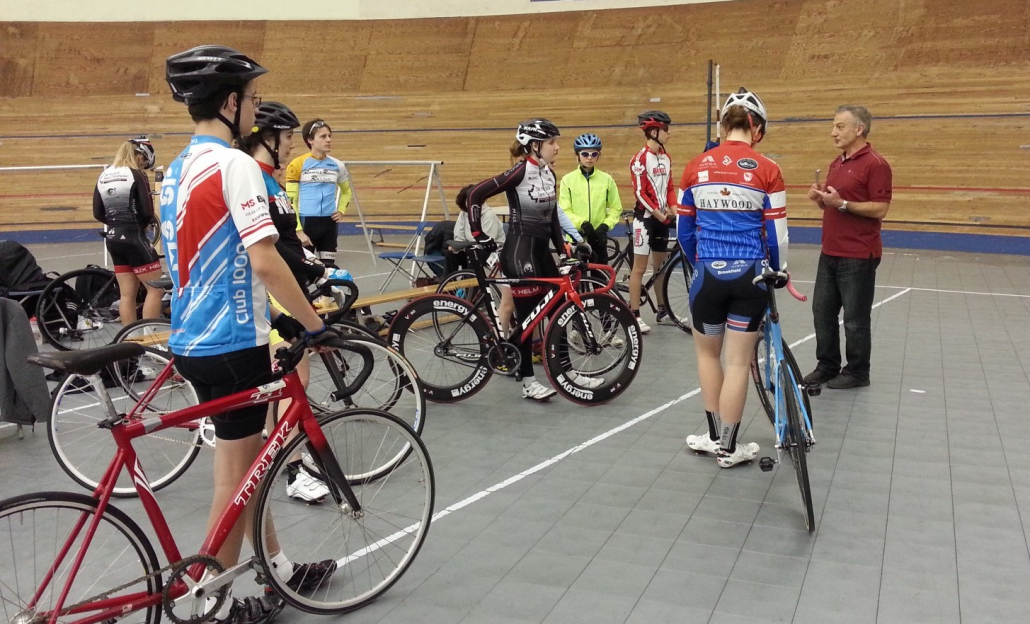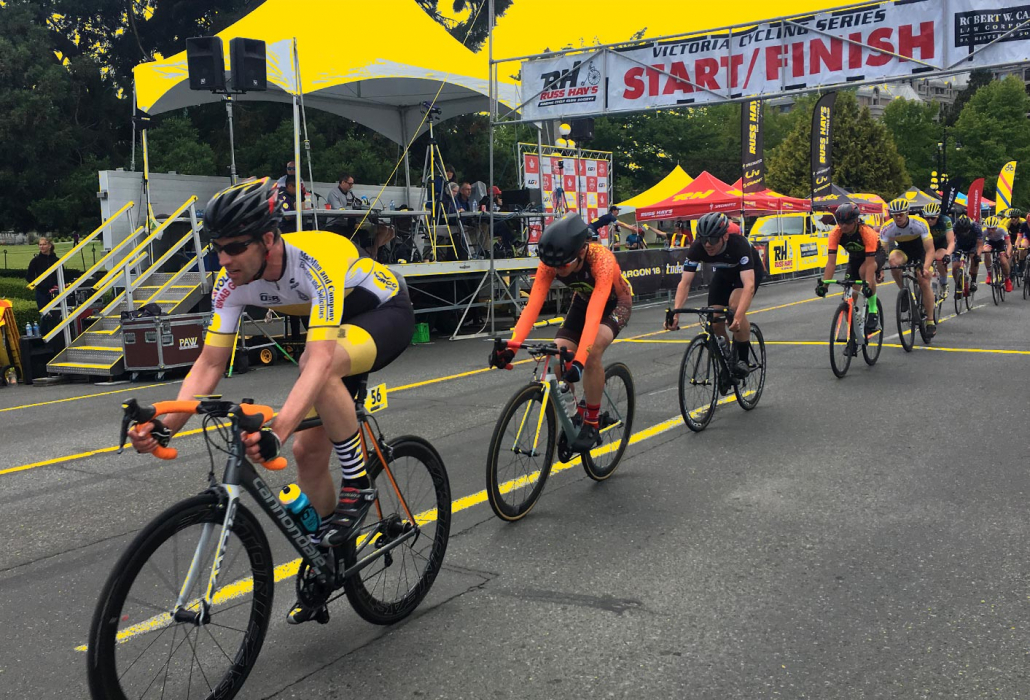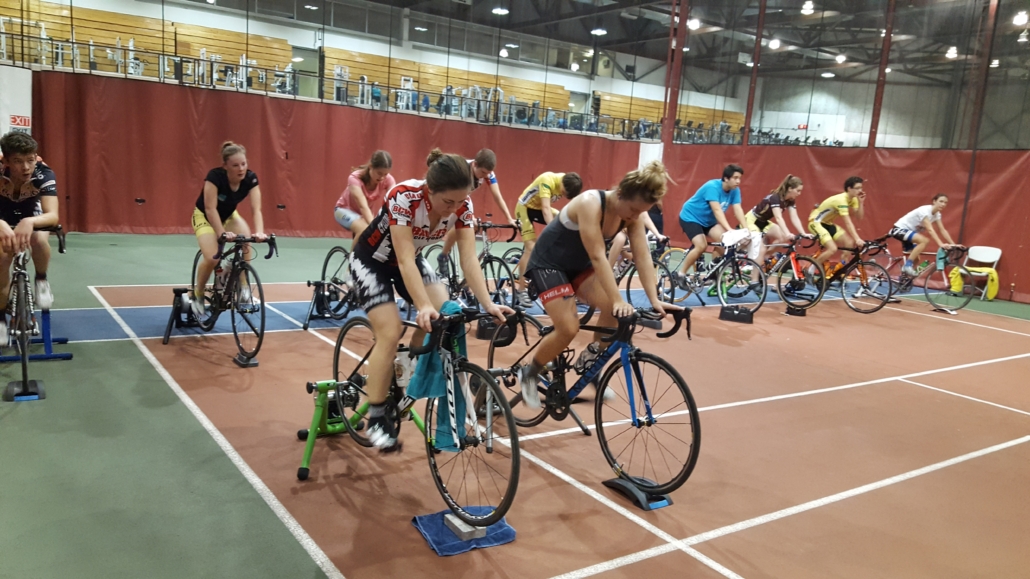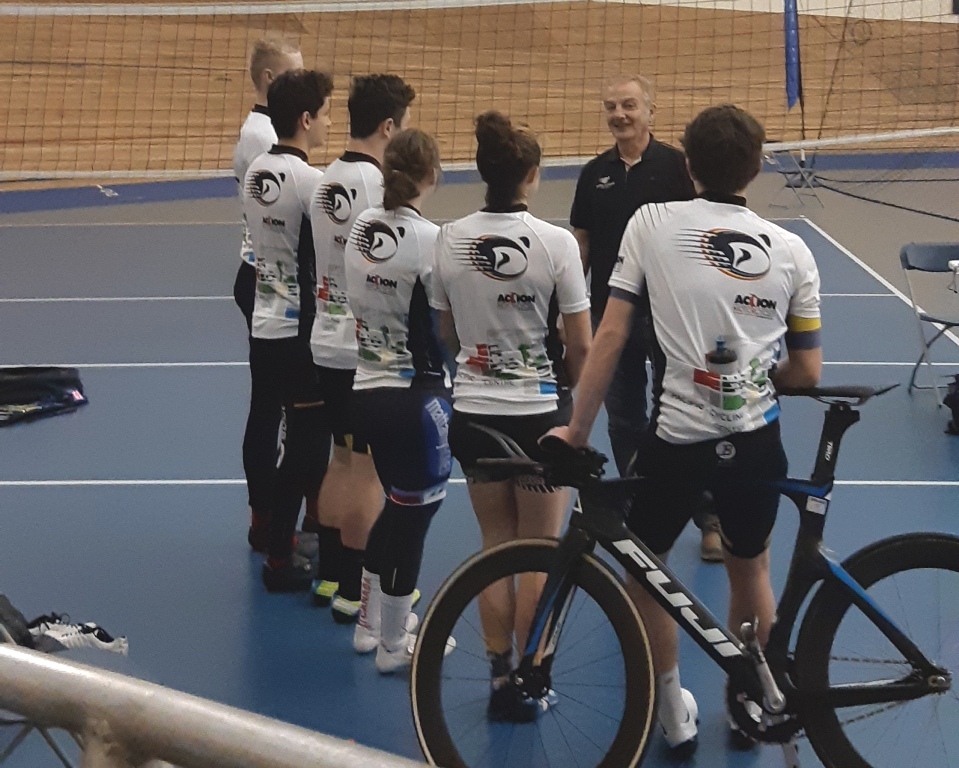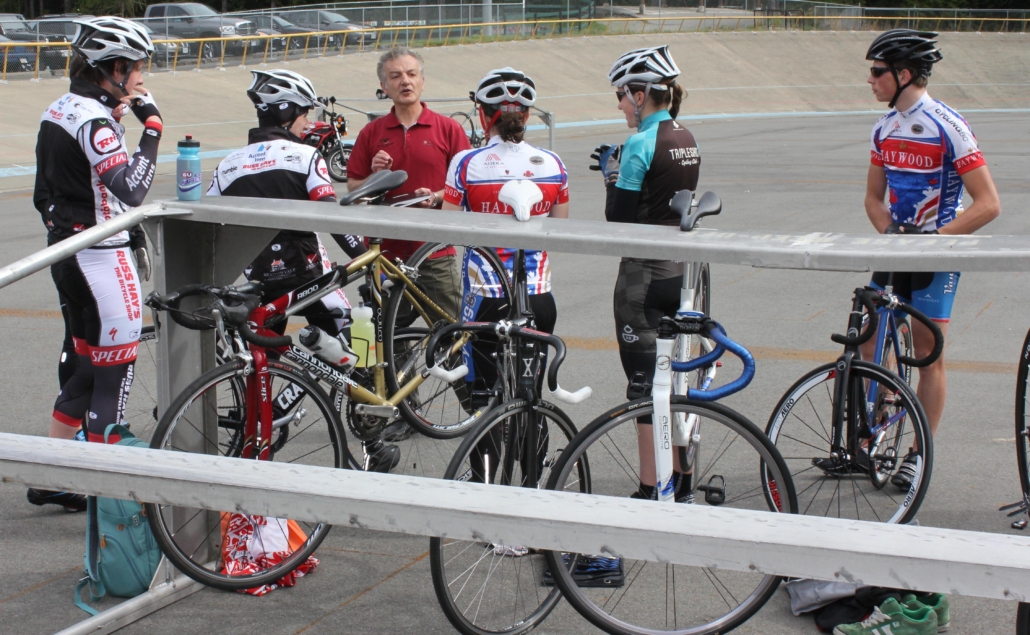
Houshang and PCC athletes pre-COVID
Building and having an applicable and balanced plan is something of a coaching art which includes science and knowledge of the athlete’s physical and mental state.
No matter what life throws at us we all need to have a plan in life that steers our day-to-day activities towards achieving our goals. Those goals should be the main motivation to keep you going during the pandemic.
The Way we Were
Over the past 20 years I have run training camps during the cycling season. From the National Training Centre to 2000 when it became the National Cycling Centre, and then in 2009 the Pacific Cycling Centre as a director and head coach. These camps included seminars covering nutrition, rest and recovery, training adaptations and many other topics. Often some of my past athletes would be guest speakers including Pro-tour riders like Erinne Willock and Svein Tuft.
Those training camps developed all levels of riders during the winter/spring, each having specific goals and objectives, modified for each group in preparation for early season races, usually from late February to April. Some years we moved these camps to Tucson, AZ or Palm Springs, CA. to achieve larger training volumes in a warmer climate. At the camps a personalized plan was prepared for each rider according to their goal races and performance needs.
The Here and Now
In 2020 we had to put a stop to these camps. So far in 2021, health authorities and the guidelines for public safety measures have not allowed any group training sessions, let alone travel within the province. These are precautions we all need to take.
Now we are a year deep into the pandemic and we have learned a great deal about COVID-19 and how devasting it is to our health and economy. In the early months of last year it was clear the situation was not going away anytime soon. With cancellations of all domestic races, I had to replan the approach to the 2020 season, adjusting goals in March.
Last year training for PCC athletes was very different but it had its pluses. We had more time on hand given there was no travelling to and from races (usually there is no recovery time from race to race). Everyone who followed their plan set many new PBs, finding new form and gaining a new level of fitness. This was a great achievement for us. So we now have a better idea of how to plan and set goals given the circumstances we are in
What we learned last year from training was that most of our riders were beginning racing prematurely, entering the season without enough training, leading to poor performances, and struggling for the first part of the season.
2021 Plan
When planning the 2021 training season (YTP) there are new considerations we have to be aware of. Firstly is the public’s health orders, the restrictions and how we can work within them, secondly is the 2021 race calendar with many domestic races being moved closer to the end of season (September to November).
Tips
Here are some tips for planning your 2021 season and setting goals
- Make sure you have done your past season review with your coach.
- Based on the outcome of the review you may have an area you need to work on e.g. improve aerobic power or increase w/kg, etc.
- Write down all the races you would like to do (consider some of those early season races that won’t be happening in 2021.)
- Based on the above you now can plan your season and set your new goals. Remember, an experienced coach who knows and understands you is your biggest advantage to plan the various training elements at the correct time of the year.
- Your goals should be realistic and you need to work to achieve them.
- Your coach may plan different blocks in your YTP depending on your individual requirements and your short-mid and long-term goals.
- When your plan is set, you should trust it and not deviate from it never doubting yourself and your ability.
By Houshang Amiri ChPC
UCC-WCC Expert Coach

